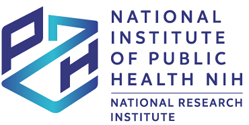Anti-inflammatory food products and the severity of menstrual pain: a narrative review
1
Department of Human Nutrition, Institute of Human Nutrition Sciences, Warsaw University of Life Sciences (SGGW-WULS), Poland
2
Department of Nutrition Physiology, Institute of Sport – National Research Institute, Poland
Data nadesłania: 25-07-2025
Data ostatniej rewizji: 14-09-2025
Data akceptacji: 30-09-2025
Data publikacji online: 06-11-2025
Autor do korespondencji
Maria Karolina Szmidt
Department of Human Nutrition, Institute of Human Nutrition Sciences, Warsaw University of Life Sciences (SGGW-WULS), Nowoursynowska 166, 02-787 Warsaw, Poland
Department of Human Nutrition, Institute of Human Nutrition Sciences, Warsaw University of Life Sciences (SGGW-WULS), Nowoursynowska 166, 02-787 Warsaw, Poland
SŁOWA KLUCZOWE
DZIEDZINY
STRESZCZENIE
Menstruation is a natural physiological process in healthy women of reproductive age, often accompanied by physical
and psychological symptoms that can impair daily functioning and quality of life. Given the established role of oxidative
imbalance in menstrual discomfort, dietary products rich in anti-inflammatory and antioxidant compounds may offer
a non-pharmacological approach to symptom management. However, to date, this area remains insufficiently explored
in the literature. The aim of this narrative review was to assess the relationship between the consumption of foods
with anti-inflammatory potential and the severity of menstrual pain. PubMed, ScienceDirect, and Web of Science were
searched from inception to May 2025 using following keywords: “anti-inflammatory products”, “whole grains”, “fish”,
“seafood”, “vegetables”, “fruits”, “legumes”, “nuts”, “seeds”, “olive oil”, “fats”, “menstruation”, “primary dysmenorrhea”.
Reference lists of included studies were also reviewed manually. Nine relevant studies were identified in the literature
review (1 meta-analysis, 2 case-control, and 6 cross-sectional studies). The results showed that whole grains and fish
consumption may be inversely associated with menstrual pain, though findings were inconsistent. While one meta-analysis
on fruit and vegetable consumption and severity of menstrual pain found no significant association, several other studies
reported a protective association with higher/more frequent intake. Evidence on legumes was inconclusive. No studies
to date assessed the association between olive oil, nuts, and seeds and menstrual symptoms. Interpretation of findings
was limited by methodological heterogeneity, including differences in dietary assessment, symptom measurement tools,
and participant characteristics. Preliminary evidence suggests that the anti-inflammatory foods, such as whole grain,
vegetables, and fish may help alleviate the severity of menstrual pain, but the current evidence is inconsistent. However,
the number of studies published in this area to date is limited and generally of low quality. Therefore, further high-quality
research is needed to clarify these associations.
Udostępnij
ARTYKUŁ POWIĄZANY
Przetwarzamy dane osobowe zbierane podczas odwiedzania serwisu. Realizacja funkcji pozyskiwania informacji o użytkownikach i ich zachowaniu odbywa się poprzez dobrowolnie wprowadzone w formularzach informacje oraz zapisywanie w urządzeniach końcowych plików cookies (tzw. ciasteczka). Dane, w tym pliki cookies, wykorzystywane są w celu realizacji usług, zapewnienia wygodnego korzystania ze strony oraz w celu monitorowania ruchu zgodnie z Polityką prywatności. Dane są także zbierane i przetwarzane przez narzędzie Google Analytics (więcej).
Możesz zmienić ustawienia cookies w swojej przeglądarce. Ograniczenie stosowania plików cookies w konfiguracji przeglądarki może wpłynąć na niektóre funkcjonalności dostępne na stronie.
Możesz zmienić ustawienia cookies w swojej przeglądarce. Ograniczenie stosowania plików cookies w konfiguracji przeglądarki może wpłynąć na niektóre funkcjonalności dostępne na stronie.



